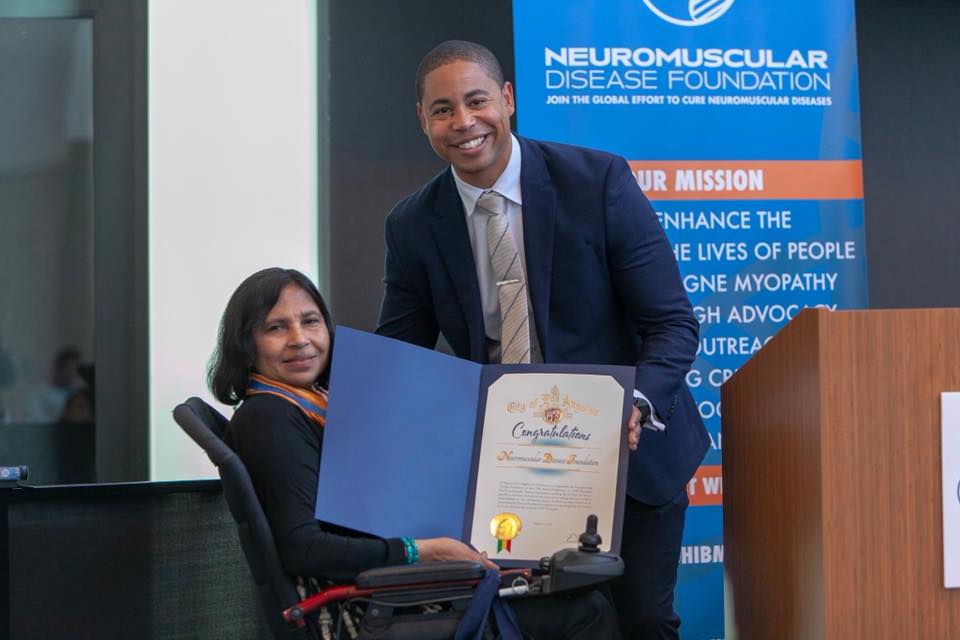For those who are interested Ultragenyx has now opened the extension of Phase 2 study or SA-ER. Seems like you have had to participate in Phase 2 to qualify for this study. For those interested, please contact the sites listed.
 Purpose
Purpose
Detailed Description:
 Eligibility
Eligibility
 Contacts and Locations
Contacts and Locations
 More Information
More Information
No publications provided
ClinicalTrials.gov processed this record on July 04, 2013
http://clinicaltrials.gov/ct2/show/NCT01830972?term=hibm&rank=5
An Open Label Phase 2 Extension Study of(SA-ER)Tablet
This study is currently recruiting participants.
Verified July 2013 by Ultragenyx Pharmaceutical Inc
Sponsor:
Ultragenyx Pharmaceutical Inc
Information provided by (Responsible Party):
Ultragenyx Pharmaceutical Inc
ClinicalTrials.gov Identifier:
NCT01830972
First received: April 10, 2013
Last updated: July 3, 2013
Last verified: July 2013
- Full Text View
- Tabular View
- No Study Results Posted
- Disclaimer
- How to Read a Study Record
GNE myopathy or hereditary inclusion body myopathy (HIBM) is a severe progressive metabolic myopathy caused by a defect in the biosynthetic pathway for sialic acid(SA). The purpose of the study is to measure long term safety and the effects of Sialic Acid-Extended Release (SA-ER) pills.
| Condition | Intervention | Phase |
|---|---|---|
| GNE Myopathy HIBM | Drug: SA-ER tablets | Phase 2 |
| Study Type: | Interventional |
| Study Design: | Endpoint Classification: Safety/Efficacy Study Intervention Model: Single Group Assignment Masking: Open Label Primary Purpose: Treatment |
| Official Title: | An Open-label Phase 2 Extension Study to Evaluate the Long Term Safety and Efficacy of Sialic Acid-Extended Release (SA-ER) Tablets in Patients With GNE Myopathy or Hereditary Inclusion Body Myopathy |
Further study details as provided by Ultragenyx Pharmaceutical Inc:
Primary Outcome Measures:
- Assess long-term safety of 6000 mg/day SA-ER in HIBM subjects [ Time Frame: approximately 3 years ] [ Designated as safety issue: Yes ]
| Estimated Enrollment: | 45 |
| Study Start Date: | June 2013 |
| Estimated Primary Completion Date: | June 2016 (Final data collection date for primary outcome measure) |
| Arms | Assigned Interventions |
|---|---|
| Experimental: open label, 6000 mg/day | Drug: SA-ER tablets |
Detailed Description:
GNE myopathy or hereditary inclusion body myopathy (HIBM) is a severe progressive metabolic myopathy caused by a defect in the biosynthetic pathway for sialic acid (SA). Substrate replacement therapy is a potential therapeutic strategy based on the success of replacing missing SA and reducing muscle disease in a relevant mouse model of the human disease (Malicdan et al., 2009). Successful use of SA replacement therapy in humans is believed to depend upon providing steady long-term exposure to the compound in an extended release form (such as Sialic Acid-Extended Release [SA-ER]), given SA's short half-life. Following a Phase 1 study to establish the pharmacokinetics for SA-ER and an ongoing Phase 2 study to assess the pharmacodynamic effect of restoring sialylation of muscle by treatment over 48 weeks, Ultragenyx is conducting this study to evaluate the long term safety and efficacy of SA-ER treatment for up to 36 additional months.
| Ages Eligible for Study: | 18 Years to 65 Years |
| Genders Eligible for Study: | Both |
| Accepts Healthy Volunteers: | Yes |
Criteria
Inclusion Criteria:
- Enrollment in and successful completion of the UX001-CL201 protocol. Must be willing and able to provide written, signed informed consent after the nature of the study has been explained, and prior to any research-related procedures.
- Must be willing and able to comply with all study procedures
- Sexually active subjects must be willing to use an acceptable method of contraception while participating in the study.
- Females of childbearing potential must have a negative pregnancy test at Baseline and be willing to have additional pregnancy tests during the study.
- Females considered not of childbearing potential include those who have been in menopause for at least two years, or have had tubal ligation at least one year prior to Baseline, or who have had total hysterectomy.
Exclusion Criteria:
- Pregnant or breastfeeding at Baseline or planning to become pregnant (self or partner) at any time during the study
- Use of any investigational product (other than SA-ER tablets) to treat HIBM
- Ingestion of ManNAc or similar SA producing compounds
- Has had any hypersensitivity to SA or its excipients that, in the judgment of the investigator, places the subject at increased risk for adverse effects
- Have any co-morbid conditions, including unstable major organ-system disease(s) that in the opinion of the Investigator, places the subject at increased risk of complications, interferes with study participation or compliance, or confounds study objectives.
Please refer to this study by its ClinicalTrials.gov identifier: NCT01830972
Locations
| United States, California | |
| UCLA Medical Center | Recruiting |
| Los Angeles, California, United States | |
| Contact: Perry Shieh, MD 310-994-5142 pshieh@mednet.ucla.edu | |
| Principal Investigator: Perry Shieh, MD | |
| United States, New York | |
| NYU Medical Center | Recruiting |
| New York, New York, United States, 10016 | |
| Contact: Heather Lau, MD 212-263-8344 Heather.Lau@nyumc.org | |
| Contact: Pankaj Patel 212-263-0139 pankaj.patel@nyumc.org | |
| Principal Investigator: Heather Lau, MD | |
| Israel | |
| Hadassah Univeristy Hospital | Recruiting |
| Jerusalem, Israel | |
| Contact: Yoseph Caraco, MD 972-2-6778584 caraco@hadassah.org.il | |
| Principal Investigator: Yoseph Caraco, MD | |
Sponsors and Collaborators
Ultragenyx Pharmaceutical Inc
No publications provided
| Responsible Party: | Ultragenyx Pharmaceutical Inc |
| ClinicalTrials.gov Identifier: | NCT01830972 History of Changes |
| Other Study ID Numbers: | UX001-CL202 |
| Study First Received: | April 10, 2013 |
| Last Updated: | July 3, 2013 |
| Health Authority: | United States: Food and Drug Administration |
ClinicalTrials.gov processed this record on July 04, 2013
